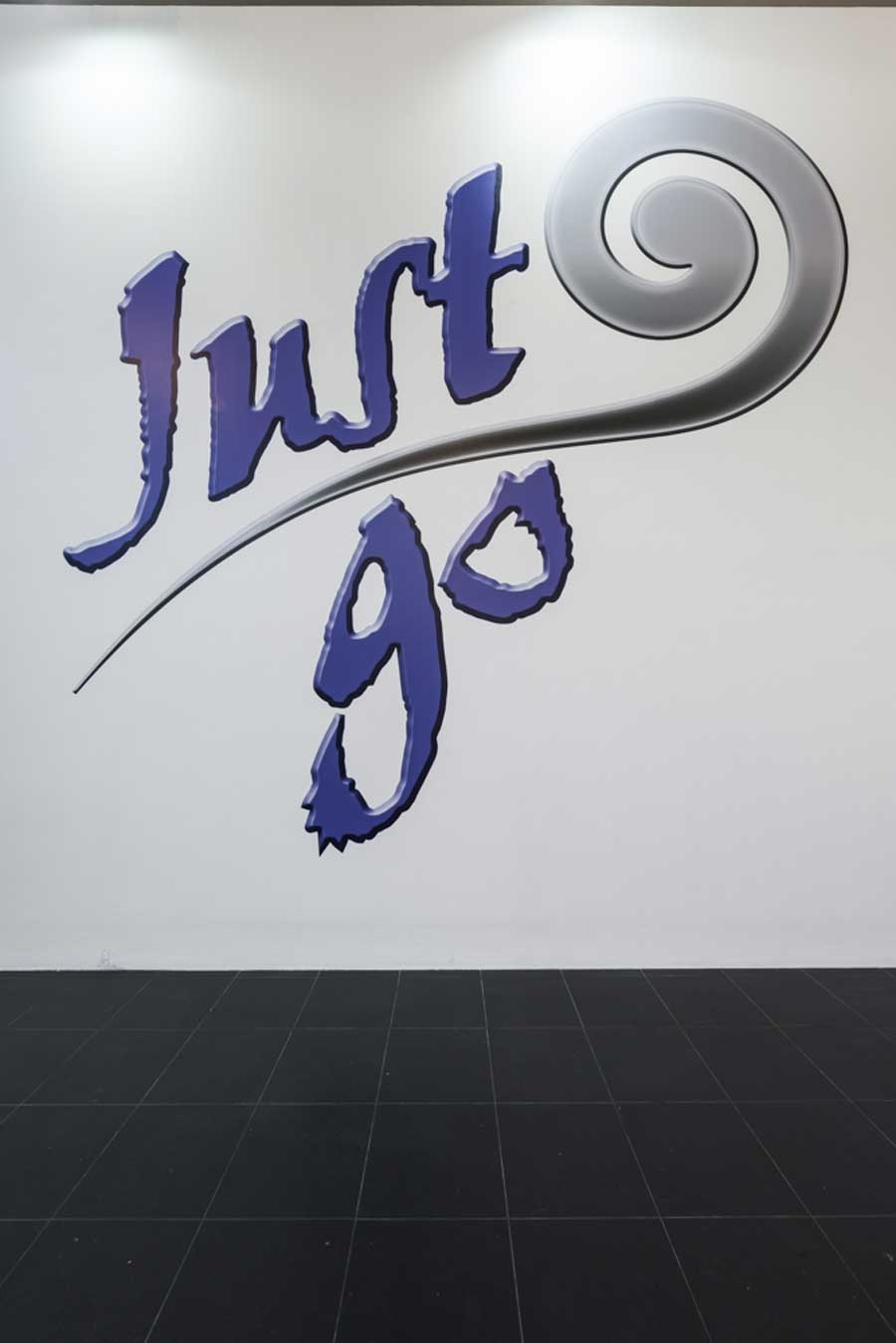In Jimmy Merris Sings the Blues (2013), at Seventeen, a collection of old television sets sit stacked on top of each other against a wall in a cramped, nearly pitch-black cellar. Each screen shows the same roughly edited video and audio with (presumably) the artist himself in different situations – in a studio, in a kitchen, at a computer. Over this multiscreen montage, a voice, again (given the exhibition’s title) presumably the artist’s, talks and sings along to blues, soul and R&B tracks. In one sequence, blues singer Z.Z. Hill cries out, “Cheatin’ in the next room/Making plans to meet him soon”, which soon leads to an out-of-focus clip of naked buttocks.
Merris is at his strongest when creating mind-skewing edits
As the frame zooms out, the figure repetitively slaps his own ass. Another fuzzy shot has a man sitting at a kitchen table. A black cat jumps onto his back; he stretches out his arms to either side, leaning over the table as the cat calmly perches on his head. More shots of figures in disparate situations follow, the effect ranging from humorous to surreal, sometimes nightmarish. “I’m a prisoner of your love,” sings Merris ironically, distilling the angst-tinged juvenile heartbreak scenario he’s plotted out.
Singing the blues supposedly requires the knowledge that comes with suffering, but wisdom’s boring when young and having it large in London (2013). Merris’s ten-day romp around the capital in a rented motorhome is documented on a shakily shot, frenetically edited video, and shown on a monitor installed on a rotating platform in the glass-fronted Bloomberg Space. On one wall is the swirling Just Go motorhome rental company logo, next to a series of posters featuring phrases and images from the film. London is faster-paced than his blues – a pink-faced man sits on a park bench philosophising: “For the amount of time it takes us to grow up, we should live to two hundred!” Merris and compatriots swill energy drinks in the caravan and make plans to head out to East London for a party; unaware of being surveilled, a cabbie thoroughly picks his nose at a traffic light; a bearded man talks about rabbits and cruising on Hampstead Heath. Ever more enigmatic snippets of London life unreel: various shots of pigeons squashed on the road, cabbies giving directions, tourists wandering.
Merris is at his strongest when creating mind-skewing edits. Both videoworks are charming, especially the latter’s gonzo-ethnography, but what’s best about them is their breathless, exuberant impetus. It’s easy to see this as a reaction to the current ADD-mediascape. In a short ‘travelogue’ text accompanying the show, curator Paul Pieroni name-checks Ken Kesey. More specifically, London recalls recordings made of Kesey’s fellow Merry Prankster and beatnik Neal Cassady as he steered the bus named Further across America. The Neal at the Wheel tapes (recorded in 1964) capture Cassady’s amphetamine-fuelled ramblings on everything from life to mathematics to the poor driving skills of others.
There’s a similar spirit in Merris’s work that desires avoiding serious outcomes and grand registers, preferring an intimate relationship with the experience of the journey, at the risk of solipsism. Merris does a lot of ironic distancing, possibly in an attempt to keep the work going. Sometimes it gets tiring, but who cares – it’s a fun ride.
This review originally appeared in the January & February 2014 issue.
